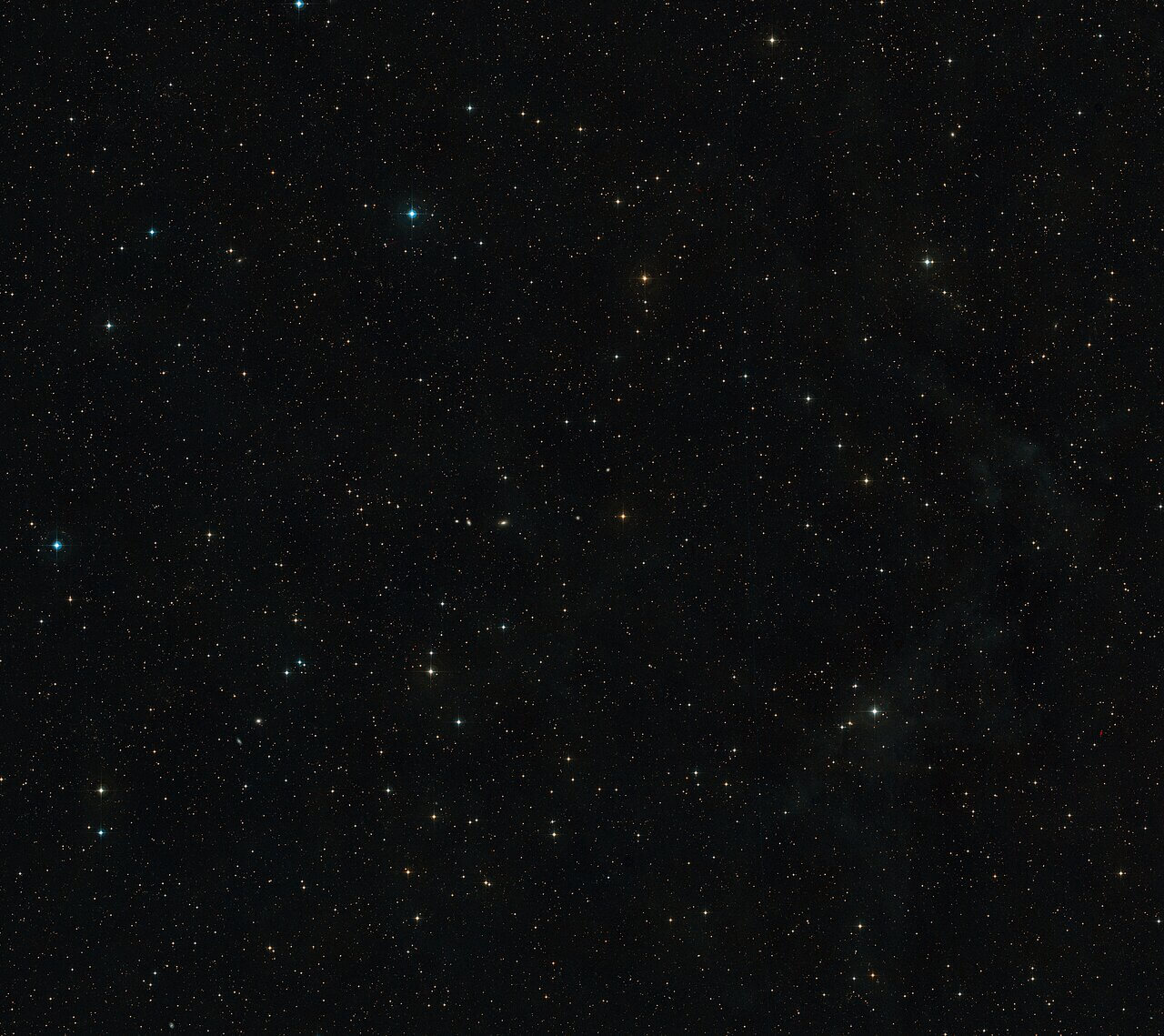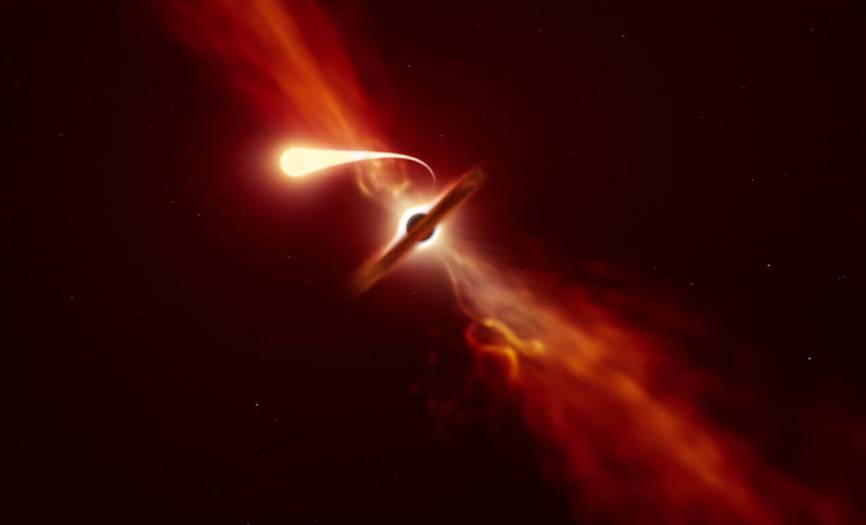Artist’s impression of star being tidally disrupted by a supermassive black hole. Image © ESO.
Under a very powerful non-homogeneous gravitational field any object will stretch vertically and compress horizontally into a long thin shape like spaghetti, this effect is called the spaghettification. This effect is especially caused by extreme tidal forces. In the black hole where the most extreme gravitational forces exist, the stretching is so powerful that no object can withstand it, no matter how strong its components.
Long ago this kind of effect has been predicted to exist especially in the black hole but not visually verified yet with the required precision. But a team of astronomers using telescopes from the European Southern Observatory (ESO) and other organisations around the world, spotted a rare blast of light from a star being ripped apart by a supermassive black hole.
Also Read: Black Holes: How they work?
The recorded event called tidal disruption event (named AT2019qiz) occurred just over 215 million light-years from Earth and is the closest such flare to date. The team carried out observations of AT2019qiz, located in a spiral galaxy in the constellation of Eridanus

The data indicated that the black hole of mass black hole mass ≈ 106 M⌾, in fact, a supermassive black hole, a star of mass just disrupting a star of ≈ 1 M⌾. [1 M⌾ = Solar Mass ≈ 2 × 1030 kg]
Matt Nicholl, a lecturer and Royal Astronomical Society research fellow at the University of Birmingham, UK, and the lead author of the study said, “The idea of a black hole ‘sucking in’ a nearby star sounds like science fiction. But this is exactly what happens in a tidal disruption event.”
Also Read: Strange Black Holes In The Universe
Here, the team of researchers pointed ESO’s Very Large Telescope (VLT) and ESO’s New Technology Telescope (NTT) towards a new flash of light that occurred last year close to a supermassive black hole and investigated what happened when a star is devoured by such a monster, in detail, though, the spaghettification experienced by a star or any object is rare and not easy to study.
Samantha Oates, at the University of Birmingham, explained, “We found that, when a black hole devours a star, it can launch a powerful blast of material outwards that obstructs our view.” This happens because the energy released as the black hole eats up stellar material propels the star’s debris outwards.
Researchers found that the AT2019qiz occurred in a galaxy likely hosting a weak AGN and the galaxy has a high central concentration. They also observed that around the maximum light region, the temperature suddenly drops while the radius stays constant. This can be explained as trapped photons advected by the outflow suddenly escaping when it reaches the radius at which the optical depth is below unity.
The burst was powerful and bright, but until astronomers were having trouble in investigating it because it was often obscured by a curtain of dust and debris. Ultimately astronomers got success to shed light and observe over the curtain. They explained that the discovery became a success story because the tidal disruption event, AT2019qiz, was found just a short time after the star was ripped apart.
Kate Alexander, NASA Einstein Fellow at Northwestern University in the US said, “Because we caught it early, we could actually see the curtain of dust and debris being drawn up as the black hole launched a powerful outflow of material with velocities up to 10 000 km/s. This unique ‘peek behind the curtain' provided the first opportunity to pinpoint the origin of the obscuring material and follow in real-time how it engulfs the black hole.”
AT2019qiz was observed over the period of six months as the flare grew in luminosity and then faded away.
Thomas Wevers, an ESO Fellow in Santiago, Chile said, “Several sky surveys discovered emission from the new tidal disruption event very quickly after the star was ripped apart. We immediately pointed a suite of ground-based and space telescopes in that direction to see how the light was produced.”
This research finding will help us to better understand supermassive black holes and how matter behaves in the extreme gravity environments around them, though further study with more advanced equipment is required. In the future, ESO’s Extremely Large Telescope (ELT), planned to start operating this decade, and so this will enable us, researchers, to detect increasingly fainter and faster evolving tidal disruption events, to solve further mysteries of black hole physics.
You can find the research paper here.
